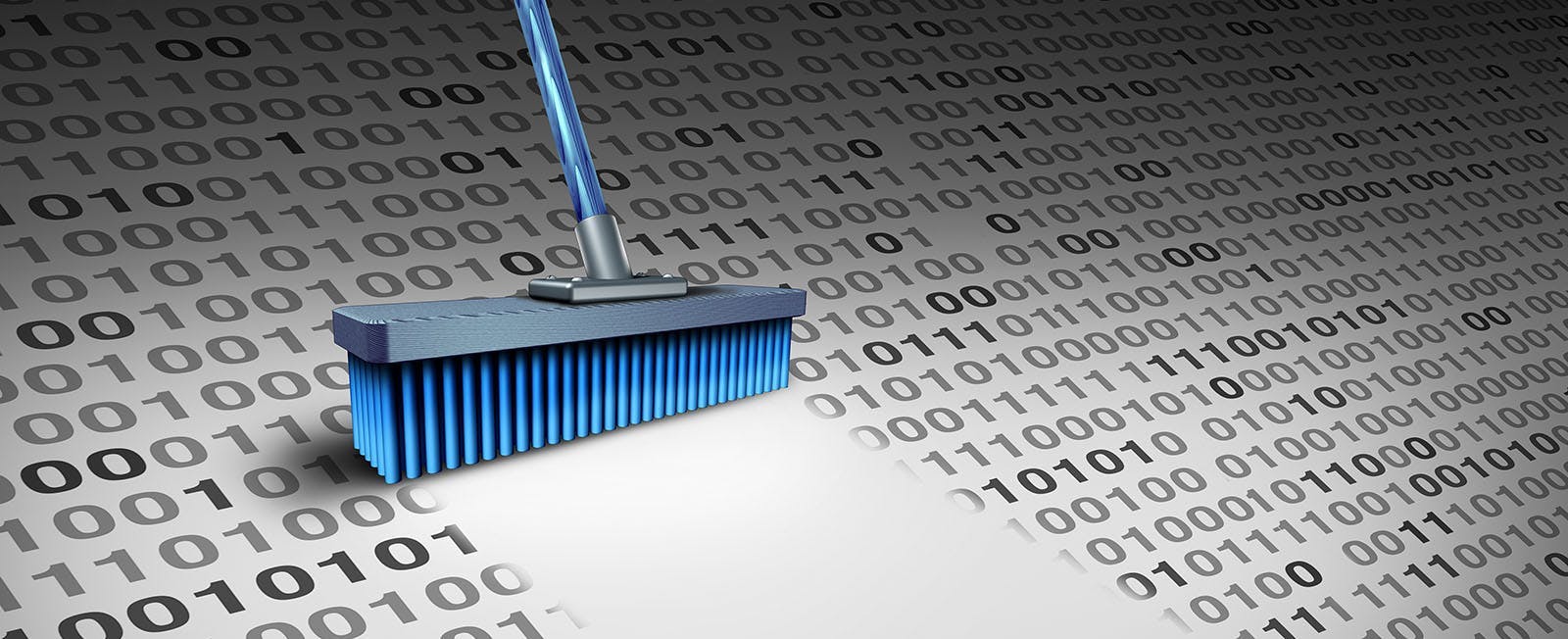Birds are singing. Flowers are blooming. Spring has finally arrived! And we are at least 60% sure it’s here to stay. Like most, when spring has finally sprung you probably get a burst of energy after being cooped up inside all winter and use it to do some spring cleaning around the house. There’s something freeing about getting rid of old clothes or clearing out the garage.
The same principle applies to your computer. There are plenty of old dusty things living in the attic and basement of your computer that could use some love. Now is a great time to clear out the digital cobwebs and start fresh. Here are four steps to spring clean your computer.
1. Trash It
For a lot of people, it can be difficult to let go of things they think they might use one day and the same can be said of old files and documents, but the first step to a clean computer is to get rid of old files that you haven’t looked at in years. I promise it will feel great clearing out the clutter.
And if you really can’t part with that document where you started your dream journal and may yet one day return to, you can always put it in a folder full of files that you rarely need, but don’t want to get rid of. It’s kind of like the digital equivalent of stuffing everything under the bed. It’s not ideal, but you can always come back to it later. Another solution is to put those files on a flash drive instead. Then I suppose it’s more like putting your junk in a storage unit that you never visit.
Just like clearing out your files, you should take a look at the programs you have installed on your device. Chances are there are at least a couple of programs that you downloaded because you needed them for one project and haven’t looked at them since. They are just taking up space and depending on how many programs you have on your computer, they could be slowing your machine down.
Another place to purge is your inbox. I know for some that can be the most daunting task of all, but deleting old emails and folders can help streamline your searches in the future. Also, if the information in your inbox is important to keep, think about whether it should have a permanent home elsewhere on your computer or in your file sharing solution.
2. Arrange and Rearrange
Once you have paired down to just the files and programs that you actually want to keep and use, you can start putting everything in its place. Just like you would in your home, start putting like things together and compartmentalize. Create or combine folders where it makes sense, and don’t forget to be consistent. For some tips on structuring your files and naming conventions, take a look at this article.
I’ve found that when it comes to computer desktop organization, there are only two kinds of people: almost no files or folders on the desktop, or approximately 4,000 individual files on the desktop. If you’re the former you can probably skip the step of desktop organization unless you can make your life easier by creating a shortcut or two to some of your more frequently used files. However, if you are the latter, please for the sake of all that is good, clean up your desktop. At least put them in folders.
Now that you have paired down your digital clutter and put everything away neatly, you should spare a moment to update and refresh everything. Think of it like dusting. It may not seem like a big deal, but eventually, things are going to get gummed up (plus it will make your IT people happy).
Next, change your passwords. You’ve heard it before and you’re almost never going to stop hearing about it. We’re long past the days where “password123” is secure enough for your confidential files. You need a complex password to keep your information safe. Take a look at these security tips to get some good guidelines for creating a secure password.
The final thing to update is your computer’s software. That’s the popup you keep pressing “remind me later.” Well, it’s officially later. For a lot of computers now, you can set it to automatically update so it doesn’t bug you while you’re working. Just be sure to pick a time when you will probably not be using it so it doesn’t cause unnecessary delays and headaches.
4. Don’t Forget the Hardware
Congratulations you’ve decluttered, organized, and updated your computer’s information. Now for that extra step, you can clean your physical hardware. Because no matter how careful you are there are definitely crumbs in your keyboard.
First things first, shut your computer off and unplug it. Gather some cleaning materials such as:
- Compressed air
- Microfiber cloth
- Cotton swabs
- Rubbing alcohol
You’re going to want to use the canned air to blast all the dirt, dust, and crumbs out of all the nooks and crannies of your machine. For your screen, use a microfiber cloth so you don’t make any scratches. The cotton swabs and rubbing alcohol are great for those spots of dried jelly from a late night peanut butter and jelly sandwich (just me?).
